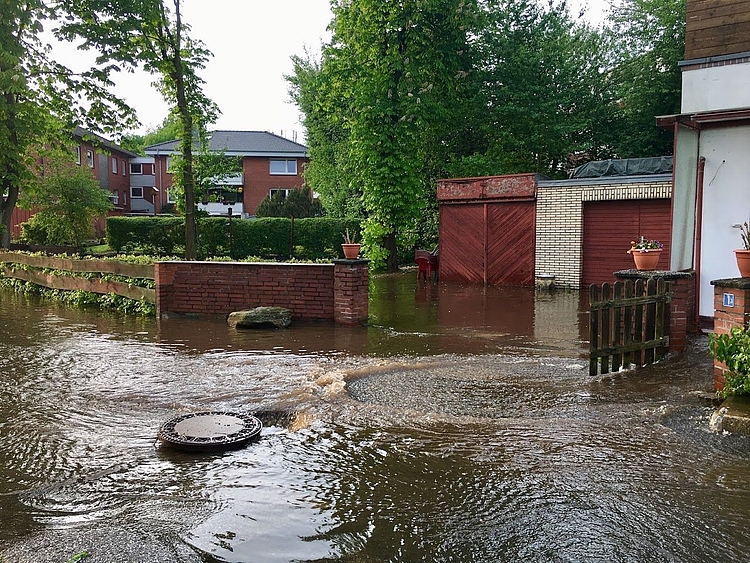ClimXtreme Module B "STEEP: Space-time statistics of extreme precipitation"

| Led by: | Prof. Dr. Uwe Haberlandt |
| Team: | Golbarg Goshtasbpour, M.Sc. |
| Year: | 2020 |
| Funding: | Federal Ministry of Education and Research (funding code 01LP1920) |
| Duration: | 04/2020 - 03/2023 |
| Further information | https://www.climxtreme.net |
As a significant result of the climate change, extreme weather events like droughts and floods have been occurring more frequently and more intensely. Extreme precipitation events which lead to extreme flooding, are considered a threat in many senses, specifically to urbanities, anthropogenic activities and infrastructure (Zhang et. Al 2014)[i]. A thorough understanding of such extreme events is of significance since it would serve many purposes namely in decision making, catastrophe risk management, etc.
Precipitation extremes are spatially and temporally dynamic phenomena, whereas so far, they have been mostly treated as single point observations. Corresponding extreme value statistics are applied to the point observations and aggregated for different durations. However, many consequences of precipitation such as floods are related to water volumes, thus the spatial aspect should not be neglected. Most investigations on past series neglect the spatial extent of rainfall events. The traditional area reduction factors are based on simple assumptions and their possible changes due to climate change are not considered. Hence the necessity of studying this phenomenon further arises, with more focus on their spatial dependence and the statistics of their space-time dynamics.
The main objectives of this project are firstly to hand a better understanding of dynamics of space-time extreme rainfall and secondly to develop new statistical approaches for an improved description of the spatial behavior of such events. With the focus on frequency, intensity, duration, extent, shape and dependencies of the extreme precipitation in space and time, but with the tendency towards the considering rainfall rather as a spatial phenomenon therefore abandoning the pure point statistics approach. The expected outcomes of the project are:
- optimal use of weather radar to move from point statistics to space-time description of the events
- estimation and evaluation of AIDF (area-intensity-duration-frequency) curves for past, present and future
- assessment of the temporal change of space-time statistics of the extreme events using AIDF curves
- closer look to “unusual events” behavior in cases of the join occurrence of extremes at several clustered locations
This project is meant to contribute to the questions of ClimXtreme, especially to regarding Module B; more information is available here http://www.climxtreme.net
